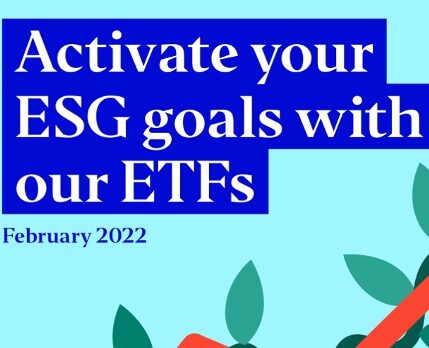

Simply no comparison: ESG rating providers all operate on different methodologies and standards – and that’s a big problem. (Photo by ahei via iStock)
Stakeholders at the government, institution and investor level are increasingly looking at environmental, social and governance (ESG) more deeply – seeking information on many other criteria considered fundamental to improving the planet, business practices and wider society. It has since become clear existing ESG reporting standards are not keeping pace, but in an industry that’s no stranger to numbers, what’s going wrong and what steps can be taken to resolve these issues?
Historically, performance and success within investment have been solely dictated by numeric gains and losses, which are easy to quantify or report on, and that makes it more straightforward for investors to make comparisons.
This isn’t really the case for ESG factors. There’s a wealth of qualitative data, but it is much more difficult to compare. But as ethics and impact investing become more and more prominent (hence the emergence of ESG), so too will the means to measure success.
Most stakeholders agree there’s a distinct lack of standardisation in measuring and reporting ESG implementation – both at a corporate level and at a retail level. The number of differing approaches makes it difficult for investors to make decisions that align with their objectives.
The rating agencies
The ESG rating sector emerged as a result of the call for standardisation. Four major organisations, with varying scope and coverage – Sustainalytics, MSCI, RepRisk and ISS – are widely used by investment managers.
Integrating a ‘responsibility’ profile to every fund factsheet, with indicators for the area(s) of ESG it targets, will make it easier to compare strategies within a peer group and for bespoke portfolios
Despite their qualities, these off-the-shelf solutions haven’t necessarily achieved the desired outcome and have suffered from key limitations. They all operate on different methodologies and standards, so their ratings aren’t directly comparable. Final scores therefore tend to lack correlation – where one provider ranks a company highly on an ESG indicator, another provider may rank them poorly on the same indicator.
So, comparability is clearly a big issue. Such divergence can result from data discrepancies, benchmark choice, data imputation, information overload or weighting schemes. But the vast amount of ESG metrics available is also a problem, and it’s difficult to see how providers will settle on a common set of data points.
ESG reporting: Regulatory forces
Regulation is another area to influence ESG reporting standardisation. In March 2021, the EU introduced the Sustainable Finance Disclosure Regulation (SFDR), with its primary goal being to increase transparency and shift capital towards sustainable objectives. Asset managers now have new reporting structures that could have a significant impact on fund flows in the future.
One of the key requirements is the introduction of new fund classifications – Articles 6, 8 and 9. Under the new SFDR framework, many funds are considered Article 6, which doesn’t carry many ESG requirements. Article 8 and 9 funds, on the other hand, have further ESG considerations incorporated into their structure.
While certainly a step in the right direction, many companies have struggled to successfully implement SFDR due to challenges with deadlines and multiple regulatory initiatives. The consensus is that there’s a lack of a clear roadmap and vision that outlines how all the various factors will fit together.
There are also fears that mandatory regulation could lead to some ‘window dressing’, with attempts to appear to be doing the right things, rather than actual positive efforts. Unless these are addressed, it’ll be difficult to enact real change.
Steps to help solve the problems
In Invesco’s view, while there’s no simple solution, it’s evident that there’s a real need to standardise non-financial ESG reporting, despite the challenges this presents.
And as demand is here to stay, investors need a reliable measure of what’s achievable in terms of ESG within their portfolios – aspirational ESG versus practical ESG.
Also, drawing a clear distinction between entity-level ESG and fund-level ESG is key. A good corporate ESG rating does not necessarily mean good ESG performance at an investment portfolio level and this is where elements of greenwashing could come into play.
First, it could be beneficial to categorise funds based on the area of ESG they primarily target. There will be certain funds that are specifically geared toward environmental factors, while others focus on social or governance factors.
Investors can then align their decisions with their non-financial investor objectives – in other words, their desire to ‘do good’. Invesco sets out three main components:
- • Objective – what are the fund’s ESG goals?
- • Investment process – how does it go about achieving them?
- • Outcome (which is focused on measurement and reporting) – how well did it do, what were the losses, if any, and how risky was it?
The two ‘Rs’ – risk and return profiles – are the fundamental factors in an investor’s decision-making process. Integrating a third ‘R’, with a responsibility profile to every fund factsheet, with indicators for the area(s) of ESG it targets, will make it easier to compare strategies within a peer group and for more bespoke portfolios. This could include strategies that focus specifically on diversity and inclusion, for example.
It’ll also reduce the amount of conflicting data or information that’s not relevant to the fund’s objective or to the investor’s ESG goals.
Enabling informed decisions
Reaching a consensus and taking steps to provide meaningful ESG measurements will require industry-wide collaboration. Ultimately, the goal of ESG is to have a positive impact on people and the planet, and tangible outcomes here are far more important than simply appearing to do the right thing for reputation purposes.
The combination of insightful qualitative data and meaningful quantitative data, as well as some clear ESG reporting standards, is what will help pave the way for practical metrics and methods that will allow investors to make informed decisions going forward.
Risk warnings
The value of investments and any income will fluctuate (this may partly be the result of exchange rate fluctuations) and investors may not get back the full amount invested.
Important information
This is marketing material and not intended as a recommendation to buy or sell any particular asset class, security or strategy. Regulatory requirements that require impartiality of investment/investment strategy recommendations are therefore not applicable nor are any prohibitions to trade before publication.
By accepting this material, you consent to communicate with us in English, unless you inform us otherwise.
Where individuals or the business have expressed opinions, they are based on current market conditions, they may differ from those of other investment professionals, they are subject to change without notice and are not to be construed as investment advice.







